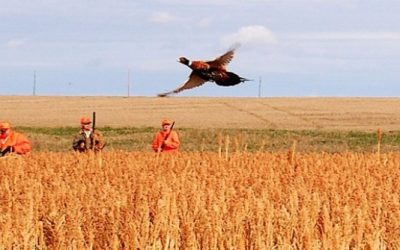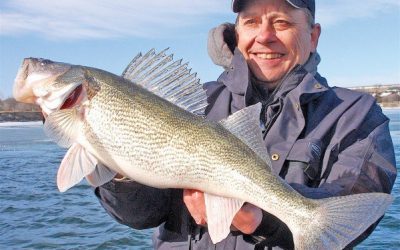Reprinted from the Sioux City Journal
There swims in the dark, swirling currents of the Missouri River a fish whose lineage dates back to over 300 million years, nearly 50 million years before the age of the dinosaurs. It’s a fish that can grow to a length of seven feet and weigh 160 pounds, although giants of that size may not exist at all anymore.
Or, perhaps not.
The paddlefish is a fish of the largest rivers in the land. Its numbers, however, have declined dramatically over the past 50 years or so, largely due to overfishing and habitat changes. Careful fisheries management has resulted in a limited harvest of this fish along the major rivers where it is found.
As Marlyn guided his boat into the tailgaters area of the Gavins Point Dam I counted 12 boats with anglers hurling big snagging rods throwing heavy lines anchored by big sinkers with a single 2/0 treble hook tied just above it into the quiet water below the gates.
We slipped in among the boats and found an open area where Marlyn could work his boat. Unlike most of the snaggers, Marlyn does not anchor and cast. Instead, he trolls with the angler trailing his line behind the boat and lunging back and forth in an effort to set the small treble hook into the flesh of one of those prehistoric swimmers.
It didn’t take long.
“Got one,” Gary grunted as his 10-foot rod bowed heavily and the tip began to throb in time with the pulling of the fish.
But our visions of a primitive monster soon evaporated as the fish rolled on the surface.
“A little one,” Gary said as Marlyn lifted it into the boat.
It might have weighed 10 pounds and would have weighed more if it had the distinctive paddle making up the snout of one of these fish. Called a rostrum, the paddle-like extension was once thought to be used to dig food from the bottom, but that is not the case. This little guy almost proved that. He was fat and in good shape.
“Must have lost that coming through the turbines,” Gary remarked as he slid the fish over the side to freedom.
Our next fish also came quickly.

This was one of the biggest paddlefish, Gary Howey, right, snagged below Gavin’s Point Dam while fishing with guide Marilyn Wiebelhaus last weekend. It measured 44 3/4″ from the eye to the tail, just 1/4″ too short. It had to be released.
This one was bigger and definitely one we had to measure. Regulations require that paddlefish measuring between 35 and 45 inches must be released. Measurements are taken from the front of the fish’s eye to the fork of the tail.
Too big. He had to go back.
And that was our fortune for the next three fish. All were just over the slot.
As more boats joined the area we were fishing we decided to move outside the pack a little farther downstream.
The action definitely slowed here. Thirty minutes of Marlyn trolling back and forth across the current yielded nothing. Then the big rod bowed hard.
“Got one,” Gary said.
But the fish didn’t budge.
“I think it’s snagged,” he remarked.
“Funny there should not be a snag out here,” Marlyn mused. “I think it is a fish.”
Another twenty seconds went by and the current was making it hard to judge.
Suddenly the rod tip bucked. It was a fish.
And a good one. When Marlyn grabbed the rostrum and slid the fish over the side, I thought we might have a keeper.
“That fish may measure over 45,” I remarked.
But the tape proved me wrong. It was an inch short. Back over the side it went.
Over the next half hour we landed two more, both almost twins to the big one and all just short of the top end of the slot.
A few more passes and we had our keeper. It was 33 inches and a prime example of a young paddlefish, well marked and fat. It would yield two nice fillets of clear, white meat.
For more information on Marlyn’s guiding service, check out his web page at www.wiebelhausguiding.com.
Paddlefish are great eating, which is another reason for their popularity among snaggers. They have no bones. Just under the skin, however, is a thick layer of red meat and that has to be carved away from the fillet. When all of the red meat is cut away the fish offers up a flavor reminiscent of fillet of sole, a saltwater delicacy.
South Dakota also offers snagging permits, although the season is in the spring. Iowa joined the paddlefish action two years ago. Check the regulations for application periods.
Range of the paddlefish has declined over the past 100 years. Interestingly, the largest paddlefish on record was speared in Lake Okoboji in 1916. It was 85 inches long and weighed an estimated 198 pounds. There also exists a photo of three paddlefish from Okoboji, each over six feet long with the largest weighing 185 pounds.
Paddlefish disappeared from the lakes shortly after.
But their numbers appear to be growing in the Missouri River due primarily to good fisheries management on the part of our three-state region. That’s good news for a fish whose ancestors long ago swam in the company of dinosaurs.





0 Comments